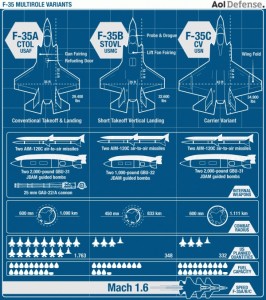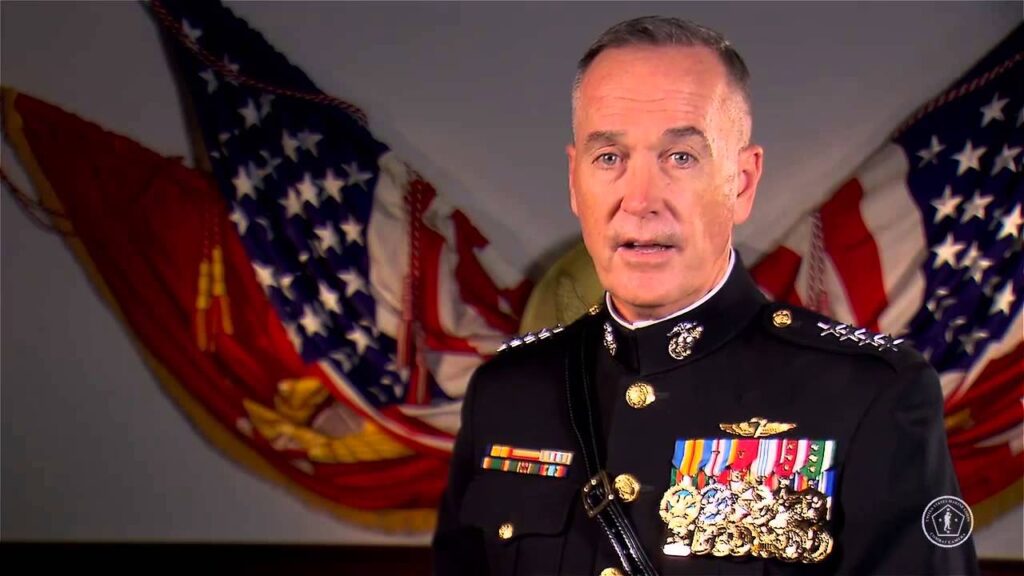WASHINGTON: The presumptive Chairman of the Joint Chiefs, Marine Gen. Joseph Dunford, has told the Senate Armed Services Committee that the most pressing areas of concern for the US military are its cyber and space capabilities; modernizing its nuclear weapons and their delivery systems; and assuring that American forces can penetrate any set of defenses anywhere in the world. He also said the Pentagon is looking hard at just how many F-35 Joint Strike Fighters to buy.
Breaking Defense obtained a copy of the 75-page set of Dunford’s answers to questions posed by the SASC. I’ve read dozens of these over the years and this set contained the most dynamic set of questions and answers I’ve seen.
In answer to the question of what he considers the “most significant challenges you expect to face, Dunford characterized the global security situation as “extraordinarily complex and volatile. We face challenges from state actors including Russia, China, Iran, and North Korea. We are also engaged in a long-term fight against violent extremist organizations. We are in the midst of a critical transition in Afghanistan. While dealing with these issues, we face the need to modernize the Joint Force in the context of fiscal challenges and budget uncertainty.” Then he ticked off those areas of concern cited above.
The background to why Dunford thinks this is expressed well in this answer to a question about “Russian aggression and the emergence of ISIL which have occurred since the Defense Strategic Guidance was issued in January 2012.” The former Marine Commandant says that the 2014 Quadrennial Defense Review may have “superseded the 2012” document but it “did not fully anticipate growing Russian aggression, the emergence of the ISIL threat, and the increase in cyber intrusions.”

How Many F-35s?
You can almost hear Sen. John McCain thundering when the questions get to the F-35.
“The program has not yet completed the System Development and Demonstration (SDD) phase, and is not due to enter full rate production until 2019, 17 years after its inception,” the committee’s question starts. “Do you believe the nation can afford to procure these aircraft at a cost of $12B to $15B per year for nearly the next 20 years for an aircraft design that will be 30 years old at the completion of the program procurement phase?” Then the committee asks Dunford if he supports the requirement for 2,443 Joint Strike Fighters.
The prospective chairman calls the F-35 a “vital component of our effort to ensure the Joint Force maintains dominance in the air.” But there is a big but. He discloses that the requirement for the size of the fleet is being reviewed: “Given the evolving defense strategy and the latest Defense Planning Guidance, we are presently taking the newest strategic foundation and analyzing whether 2,443 aircraft is the correct number. Until the analysis is complete, we need to pursue the current scheduled quantity buy to preclude creating an overall near-term tactical fighter shortfall.”
(A source close to the program was comfortable with the need for review and said nothing has changed strategically enough to change the need for 2,443 planes.)
Dunford ends by arguing the Pentagon “has been working diligently to make the overall cost per F-35 more affordable. Additionally, there will continue to be critical updates throughout the life cycle of the F-35 that will ensure the platform maintains a tactical advantage.”
Asked if he thinks the F-35 will be the last manned fighter, he says, “it is premature to rule out manned fighter aircraft without a more thorough analysis of the technologies currently available, as well as those likely to be available in the future. Decisions about future platforms should also take into consideration the threats our aircraft will face and their required missions.” He points to a joint document being developed, a “Joint Concept for Robotic and Autonomous Systems that will help guide [the military] as it incorporates these new technologies and determines how to balance manned and remotely operated systems to maximize effectiveness.”

Lockheed Martin’s UCLASS concept.
What Kind Of UCLASS?
Dunford even tackles UCLASS, the aircraft carrier-launched drone that Congress is pressing the Pentagon to make into a stealthy long-range strike asset instead of the ISR platform the Navy has said it prefers. The question asks: “Given the combat radius of the planned carrier air wing, are you concerned the carrier will lack the ability to project power at relevant distances given emerging anti-access/area-denial threats?”
His answer: “Yes. That’s why it’s critical that we continue to develop concepts and capabilities that will allow us to maintain a competitive advantage in an A2/AD environment.” Later, asked generally about ISR capabilities and whether the Pentagon should shift its acquisition of ISR platforms to ones that can penetrate an enemy’s defenses, he goes whole hog: “It is in the best interest of the United States to invest in ISR platforms, sensors, and communications capabilities designed to penetrate and survive in high-threat and denied environments; not just in the air domain, but in space, surface, and sub-surface domains as well. These systems also offer the potential to improve pre-conflict warning. These capabilities are expensive to develop and field, but are a necessary component of balanced efforts to maintain our warfighting advantages.
Put UCLASS and those comments together and it certainly sounds like something different from the current Navy plan.

Frank Kendall
Interagency, Transformation, & Acquisition
One of the most interesting strains throughout Dunford’s written answers is his consistent emphasis on the interagency process, as the complex game of coordinating US national security across the federal government is known.
For example, he says in reply to a question about what he would do to cope with this uncertain world that, “If confirmed, I would focus on contributing to the development of a comprehensive and sustainable Interagency strategy to address the challenges associated with violent extremism,”
One topic that is getting increasing attention in the Pentagon is one that Donald Rumsfeld was just getting to when confronted with the disruption of 911: transformation. In a question about transformation, Dunford tells the committee he will “develop a detailed concept for Joint exercises and experimentation. My initial assessment, from the perspective of a service chief, is that our operational tempo over the past decade has adversely impacted us in this area.” Translation, we’ve been doing lots of counter-insurgency operations and haven’t focused on waging hot war.
On the topic of sequestration, Dunford notes politely that “Our military remains hopeful that Congress can once again come together in a manner that avoids the abrupt, deep cuts of sequestration.” But he states coldly that the military “cannot execute the 2014 Quadrennial Defense Review with an additional $500 billion in cuts as the result of the Budget Control Act further exacerbated by Sequestration.”
Dunford, who clearly knows his tactical game, deftly dodges an acquisition reform question. Breaking D readers know that McCain is pushing hard to shift some acquisition power to the service chiefs, something Pentagon acquisition chief Frank Kendall fervently believes is the wrong move.
Here’s the question and the answer:
“Are there specific new roles or responsibilities that should be assigned to the Service Chiefs or Service Secretaries in the acquisition process?”
“I am supportive of current efforts that would provide additional authority and accountability to the Services as long as it does not undermine the statutory responsibilities of the Secretary of Defense. Any potential changes should hold the Services accountable and streamline the bureaucratic processes involved.” Hmm.
And he sidesteps nicely when asked if the A-10 should be retired. “I believe America’s troops in close quarters battles must have effective close air support.”
For those who wonder about his stance on Iran, Dunford minces no words when asked. “Iran’s goals and actions are inconsistent with our interests. Iran’s goal in Iraq is not to build an inclusive government; rather, it is to create a compliant, Shia-dominated buffer state.”
Dunford’s most amusing answer?
Q: In years past, Congress has based additional readiness funding decisions on the Service Chief unfunded priorities lists. However, in recent years those lists have either been nonexistent or have arrived too late in our markup process.mDo you agree to provide unfunded priorities lists to Congress in a timely manner beginning with the fiscal year 2017 budget request?
A: I will always strive to be compliant with Congressional direction.
Army eyes TBI monitoring, wearable tech for soldiers in high-risk billets
“We are also looking at what additional personal protective equipment we can provide to our folks, especially instructors and others who are routinely exposed to blast pressure,” said Army Secretary Christine Wormuth.



























